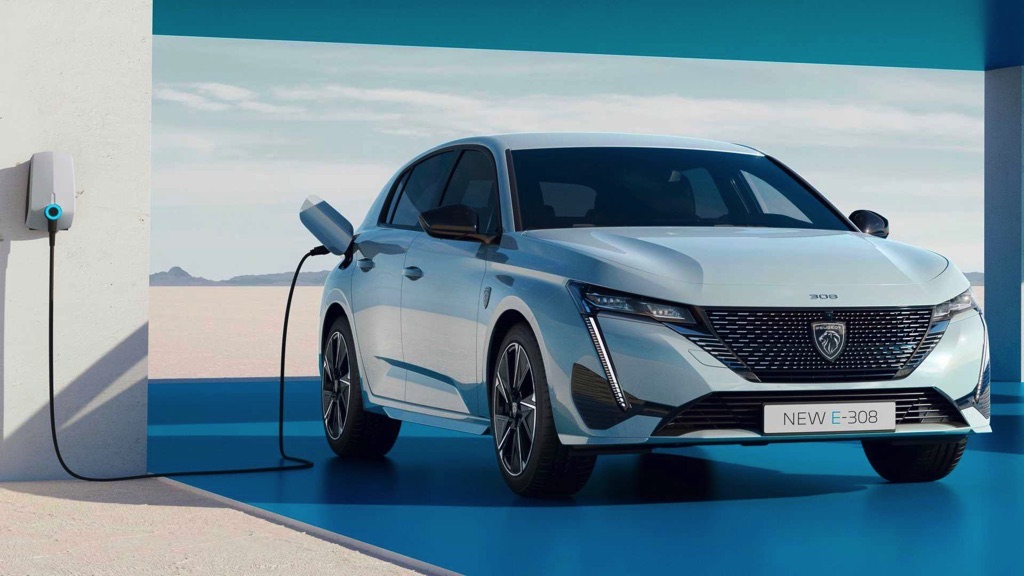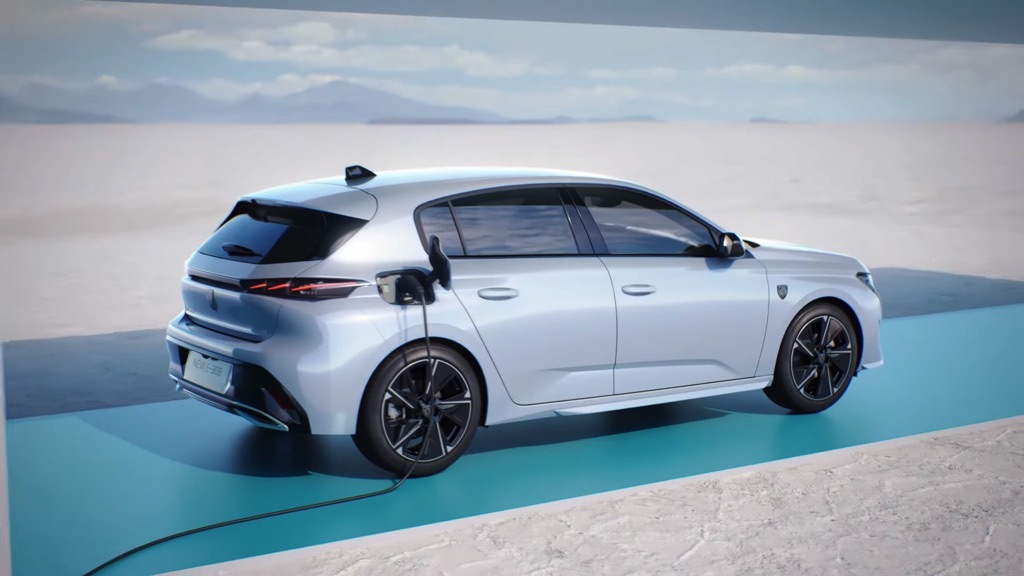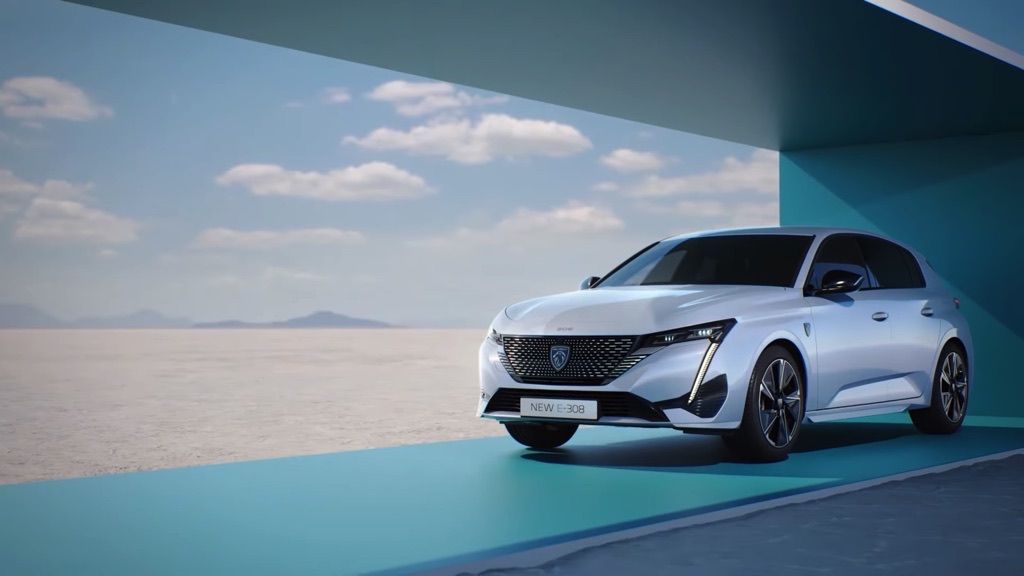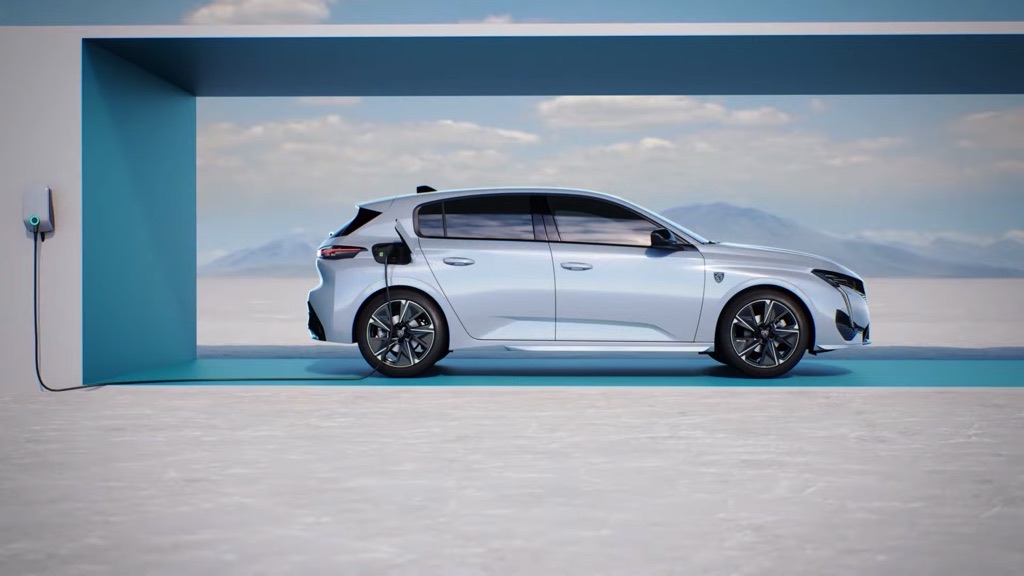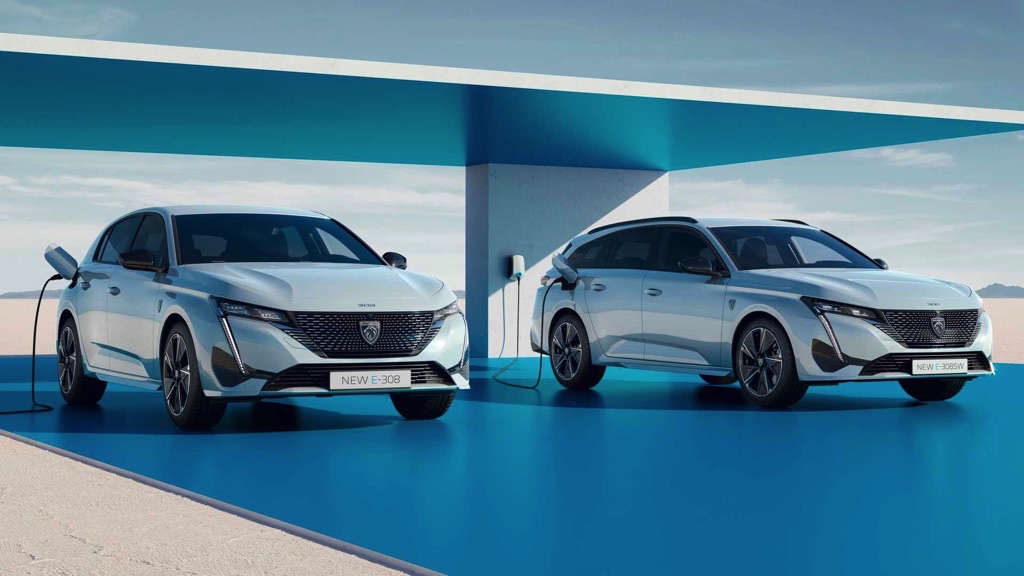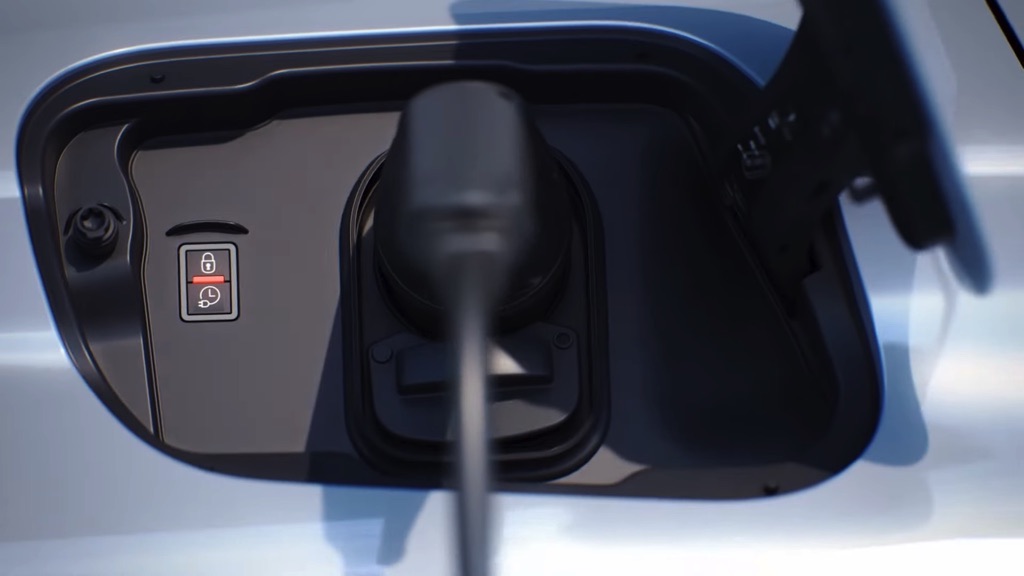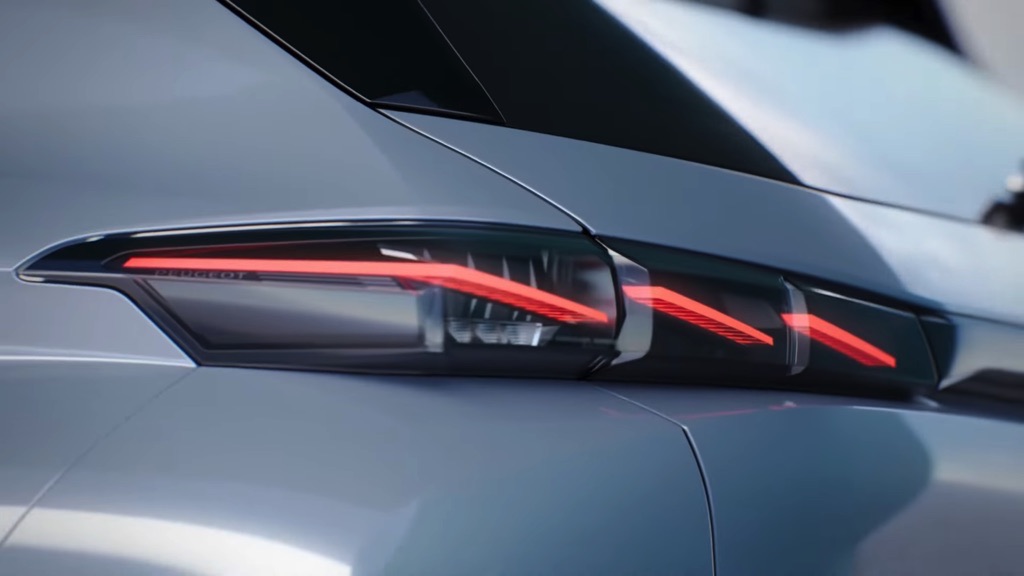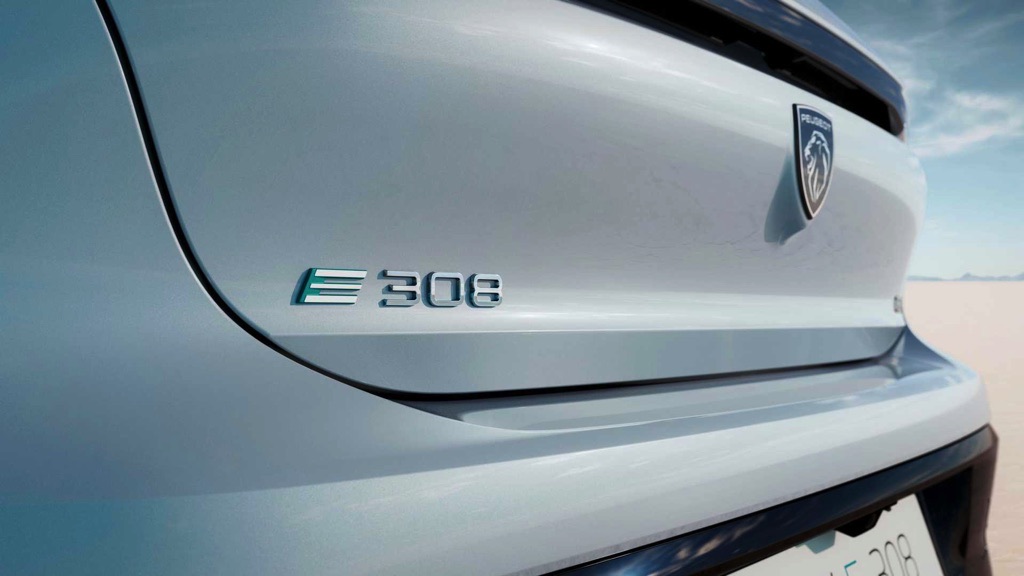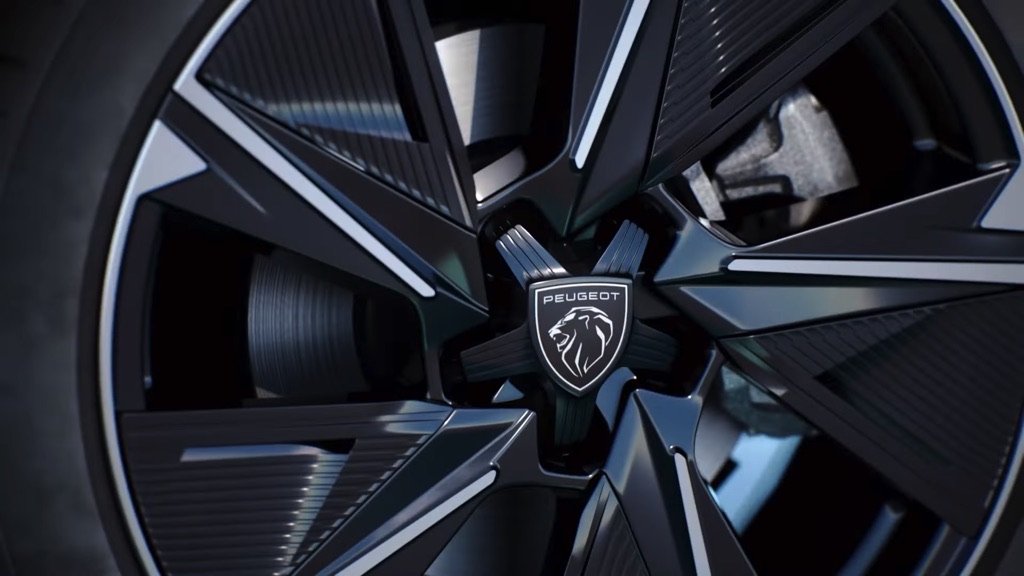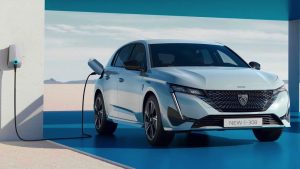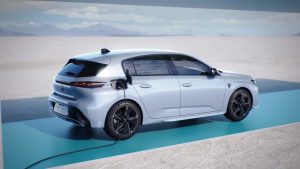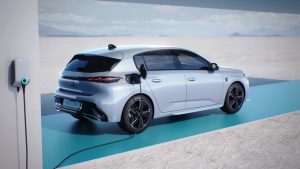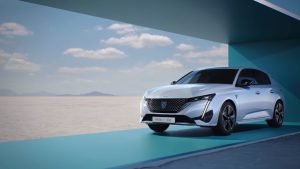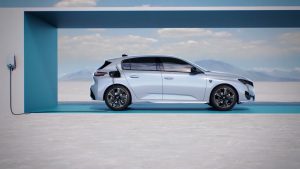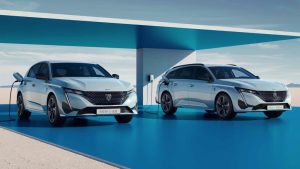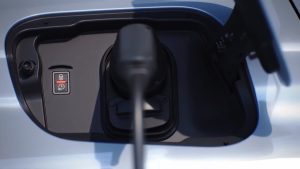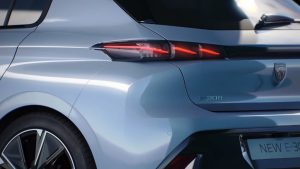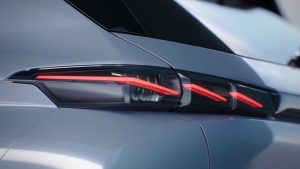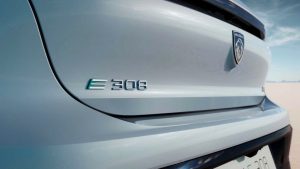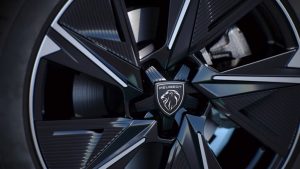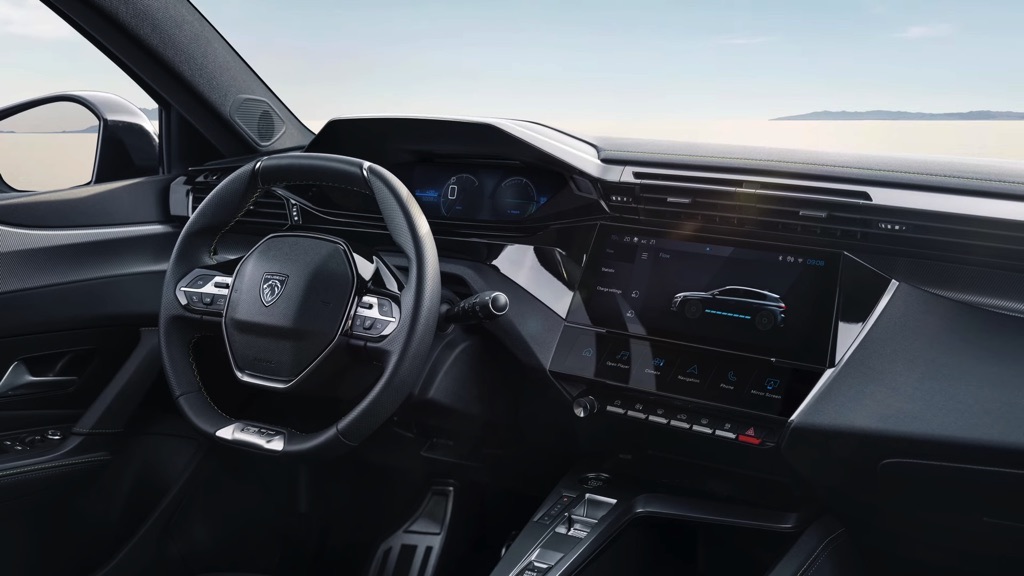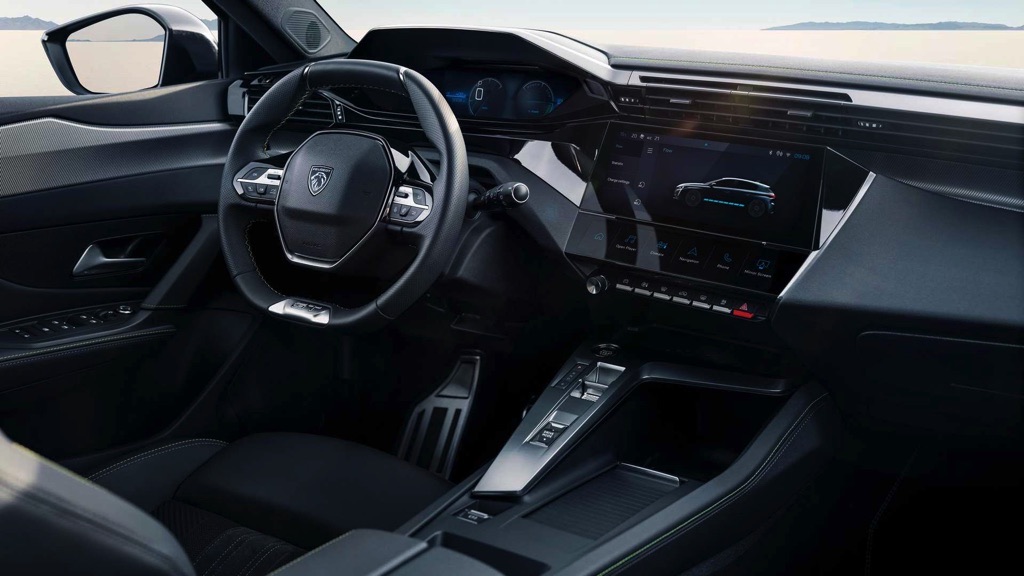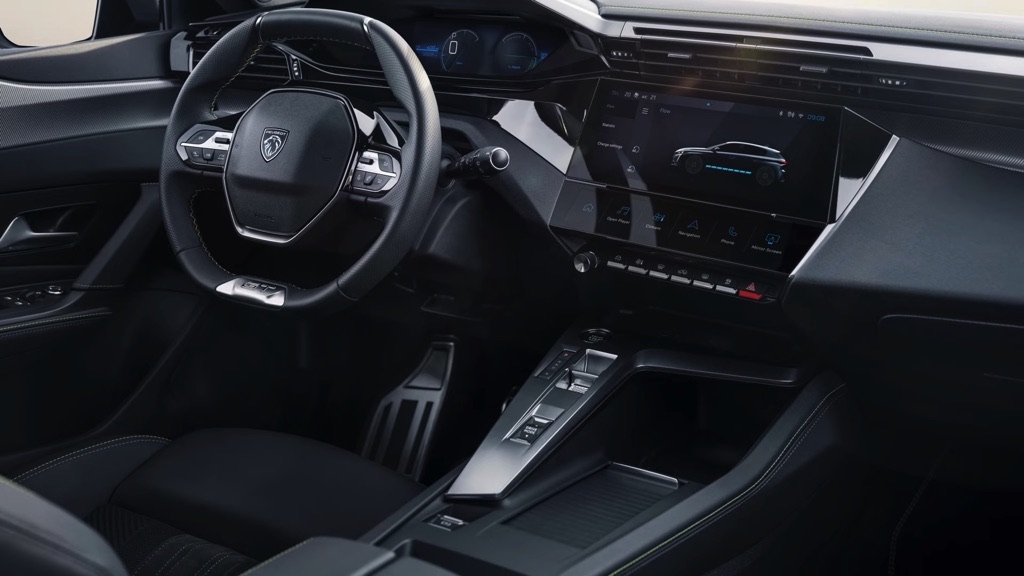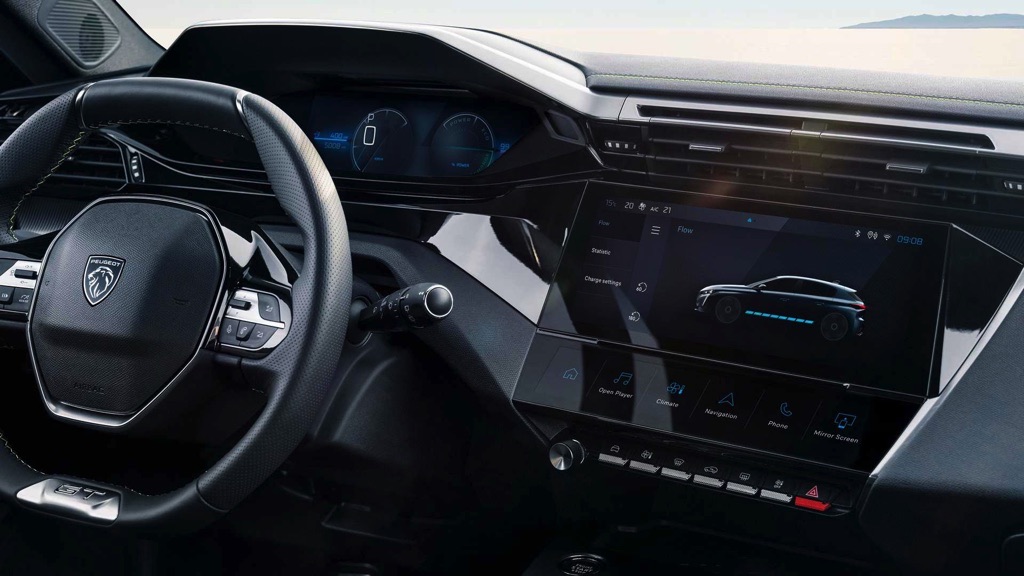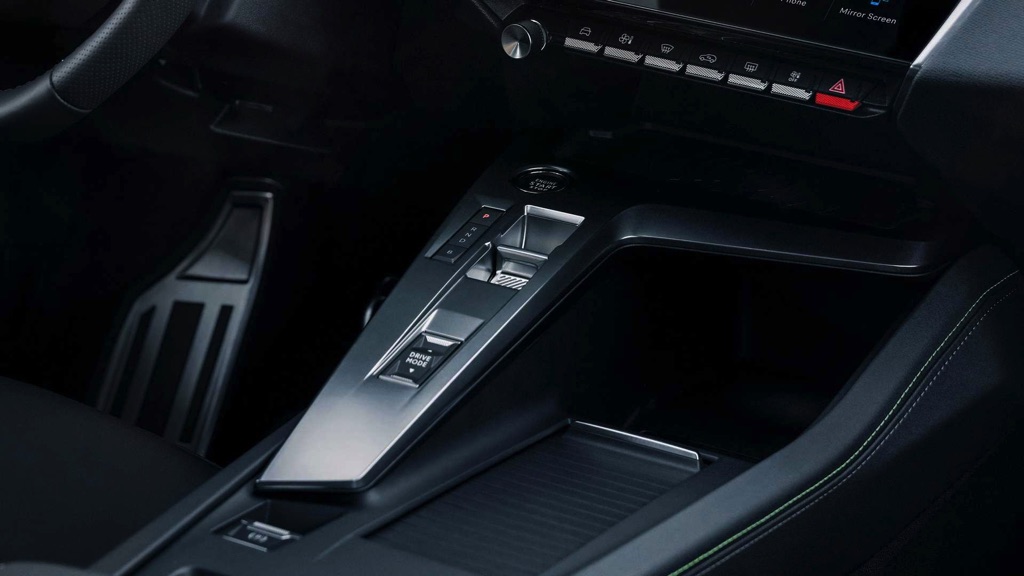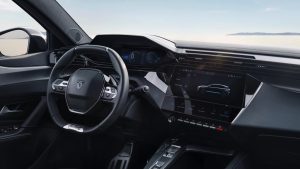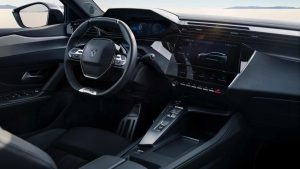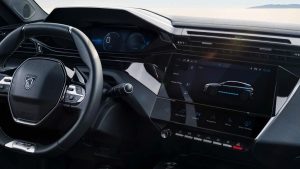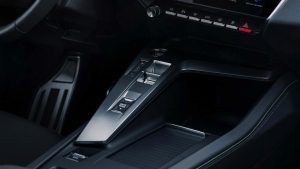Peugeot e-308
The Peugeot e-308 is an all-electric version of the popular Peugeot 308 compact car. It is powered by a 115 kW electric motor and a 54 kWh battery, which provide a range of up to 217 miles (310 km) on a single charge, according to WLTP test standards.
The e-308 has a fast charging capability, allowing it to charge up to 80% in just 28 minutes using a 100 kW DC fast charger. It also features regenerative braking, which captures energy during deceleration and braking to help recharge the battery.
In terms of performance, the e-308 can accelerate from 0 to 100 km\h in around 9 seconds, which is comparable to other electric cars in its class. It also offers a smooth and quiet driving experience, with instant torque and no engine noise.
The e-308 features a modern and stylish interior, with a digital instrument cluster and a touchscreen infotainment system. It also has a range of advanced safety features, including adaptive cruise control, lane departure warning, and automatic emergency braking.
Overall, the Peugeot e-308 is a practical and efficient electric car that offers a good balance of range, performance, and features.
| Performance | |
| Acceleration 0 – 100 km/h | 9.0 sec |
| Top Speed | 150 km/h |
| Electric Range | 310 km |
| Total Power | 115 kW (156 PS) |
| Total Torque | 260 Nm |
| Drive | Front |
| Battery and Charging | |
| Battery Capacity | 54.0 kWh |
| Battery Useable | 51.0 kWh |
| Europe | |
| Charge Port | Type 2 |
| Port Location | Right Side – Rear |
| Charge Power | 11 kW AC |
| Charge Time (0->310 km) | 5h30m |
| Charge Speed | 57 km/h |
| Fast charge Port | CCS |
| FC Port Location | Right Side – Rear |
| Fast charge Power (max) | 100 kW DC |
| Fast charge Time (31->248 km) | 28 min |
| Fast charge Speed | 460 km/h |
| Energy Consumption | |
| EVDB Real Range | |
| Range | 310 km |
| Vehicle Consumption | 165 Wh/km |
| CO2 Emission | 0 g/km |
| Vehicle Fuel Equivalent | 1.8 l/100km |
| WLTP Ratings | |
| Range | 400 km |
| Rated Consumption | No Data |
| Vehicle Consumption | 128 Wh/km |
| CO2 Emissions | 0 g/km |
| Rated Fuel Equivalent | No Data |
| Vehicle Fuel Equivalent | 1.4 l/100km |
|
Rated = official figures as published by the manufacturer. Rated consumption and fuel equivalency figures include charging losses.
|
|
|
Vehicle = calculated battery energy consumption used by the vehicle for propulsion and onboard systems.
|
|
| Real Energy Consumption Estimation between 111 – 232 Wh/km | |
| City – Cold Weather | 167 Wh/km |
| Highway – Cold Weather | 232 Wh/km |
| Combined – Cold Weather | 196 Wh/km |
| City – Mild Weather | 111 Wh/km |
| Highway – Mild Weather | 179 Wh/km |
| Combined – Mild Weather | 144 Wh/km |
|
Energy use for each trip will vary considerably depending on the driver and the conditions. Therefore, we have provided a range of estimates which can be useful in developing an understanding of the potential benefits of this technology.
|
|
| Dimensions and Weight | |
| Length | 4367 mm |
| Width | 1852 mm |
| Width with mirrors | 2062 mm |
| Height | 1441 mm |
| Wheelbase | 2675 mm |
| Weight Unladen (EU) | 1650 kg |
| Gross Vehicle Weight (GVWR) | No Data |
| Max. Payload | No Data |
| Cargo Volume | 412 L |
| Cargo Volume Max | No Data |
| Cargo Volume Frunk | 0 L |
| Roof Load | No Data |
| Tow Hitch Possible | No Data |
| Towing Weight Unbraked | No Data |
| Towing Weight Braked | No Data |
| Vertical Load Max | No Data |
| Miscellaneous | |
| Seats | 5 people |
| Isofix | No Data |
| Turning Circle | 10.5 m |
| Platform | PSA EMP2 |
| Car Body | Hatchback |
| Segment | C – Medium |
| Roof Rails | No Data |
| EV Dedicated Platform | No |
Home and Destination Charging (0 -> 100%)
A public charging station is required to use the highest possible charging rate. The EVSE/charging station’s charging capacity affects how long it takes to fully charge the battery. The table below shows all possible options for fully charging the Peugeot e-308.
In Europe, plugging an electric car into an outlet is often as easy as plugging it into a household outlet, but there are differences from country to country. The table below shows the different ways to charge the Audi Peugeot e-308, but in some countries, some chargers may not be available.
Type 2 (Mennekes – IEC 62196)

| Charging Point | Max. Power | Power | Time | Rate |
| Wall Plug (2.3 kW) | 230V / 1x10A | 2.3 kW | 26h15m | 12 km/h |
| 1-phase 16A (3.7 kW) | 230V / 1x16A | 3.7 kW | 16h15m | 19 km/h |
| 1-phase 32A (7.4 kW) | 230V / 1x32A | 7.4 kW | 8h15m | 38 km/h |
| 3-phase 16A (11 kW) | 400V / 3x16A | 11 kW | 5h30m | 56 km/h |
| 3-phase 32A (22 kW) | 400V / 3x16A | 11 kW | 5h30m | 56 km/h |
Fast Charging (10 -> 80%)
If you want to enjoy driving an electric car, one of the most important features to consider is the number of miles per hour the car can travel while charged. This is called the “range” of the car. All electric cars have a certain range, even if they are 100% charged. This is because they do not have an internal combustion engine to lean on if you need to drive a long distance.
Max. Power: The maximum power provided by the charging point
Avg. Power: The average power provided by the charging point during a session of 10% to 80%.
Time: the time it takes to charge from 10% to 80%
Speed: the average charging rate during the session of 10% to 80%
Combined Charging System (CCS Combo 2)
| Charging Point | Max. Power | Avg. Power | Time | Rate |
| CCS (50 kW DC) | 50 kW | 45 kW | 50 min | 260 km/h |
| CCS (100 kW DC) | 100 kW | 80 kW | 28 min | 460 km/h |
| CCS (150 kW DC) | 100 kW | 80 kW | 28 min | 460 km/h |
| Brand | Peugeot |
| Model | e-308 |
| Body Style | Hatchback |
| Car Engine | electric |
| Motor power | 115 |
| Maximum Torque, Nm | 260 |
| Battery Energy, kWh | 54.0 |
| Power reserve (NEDC/EPA/WLTP), km | - / - / 310 |
| Level Charging (230/400/DC), hours | 8.15 / 5.30 / 0.28 |
| Electrical Acceleration, 0-100 km/h (0-62.1 mph) in sec | 9.0 |
| Top Speed, km/h | 150 |
